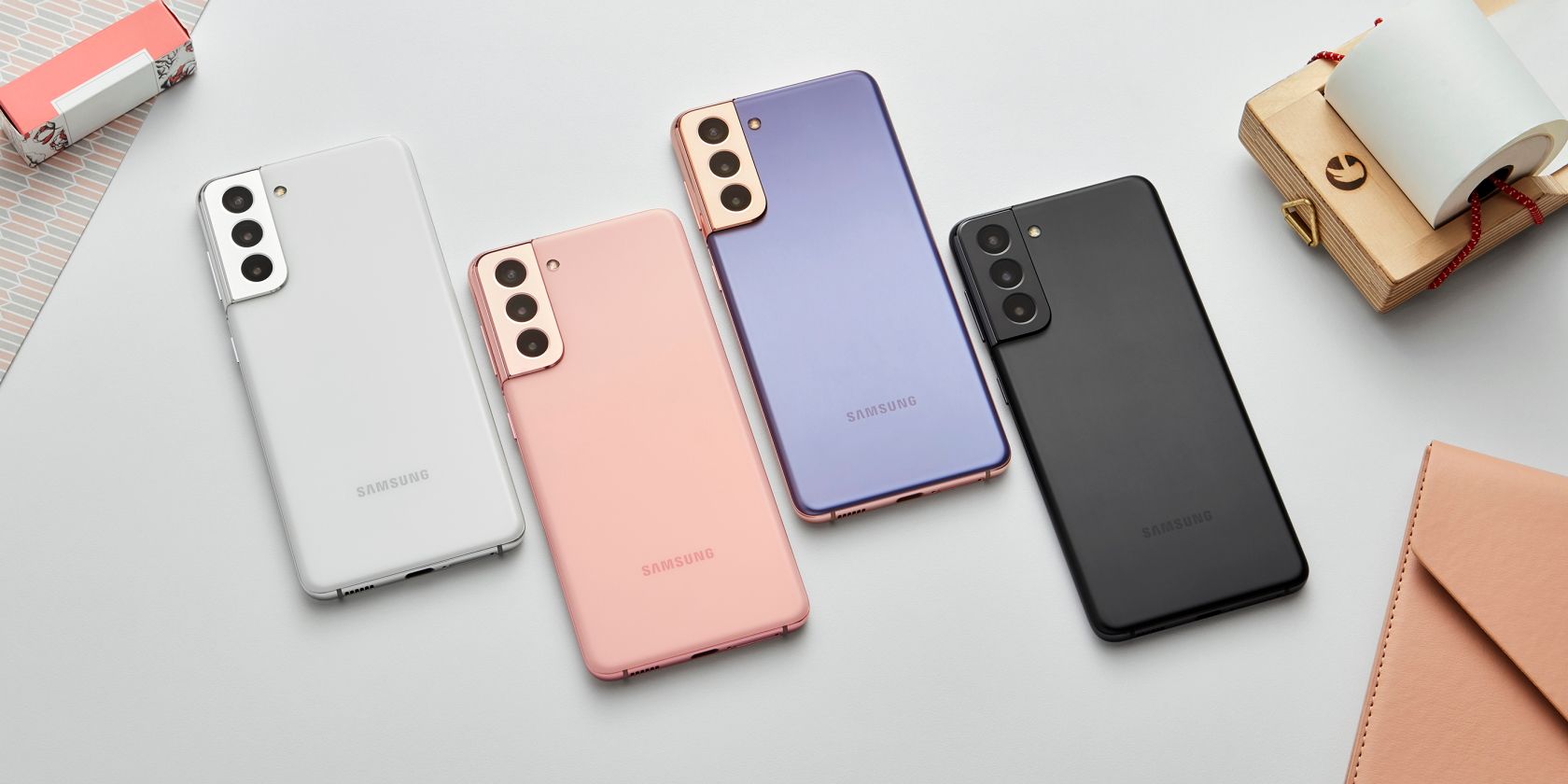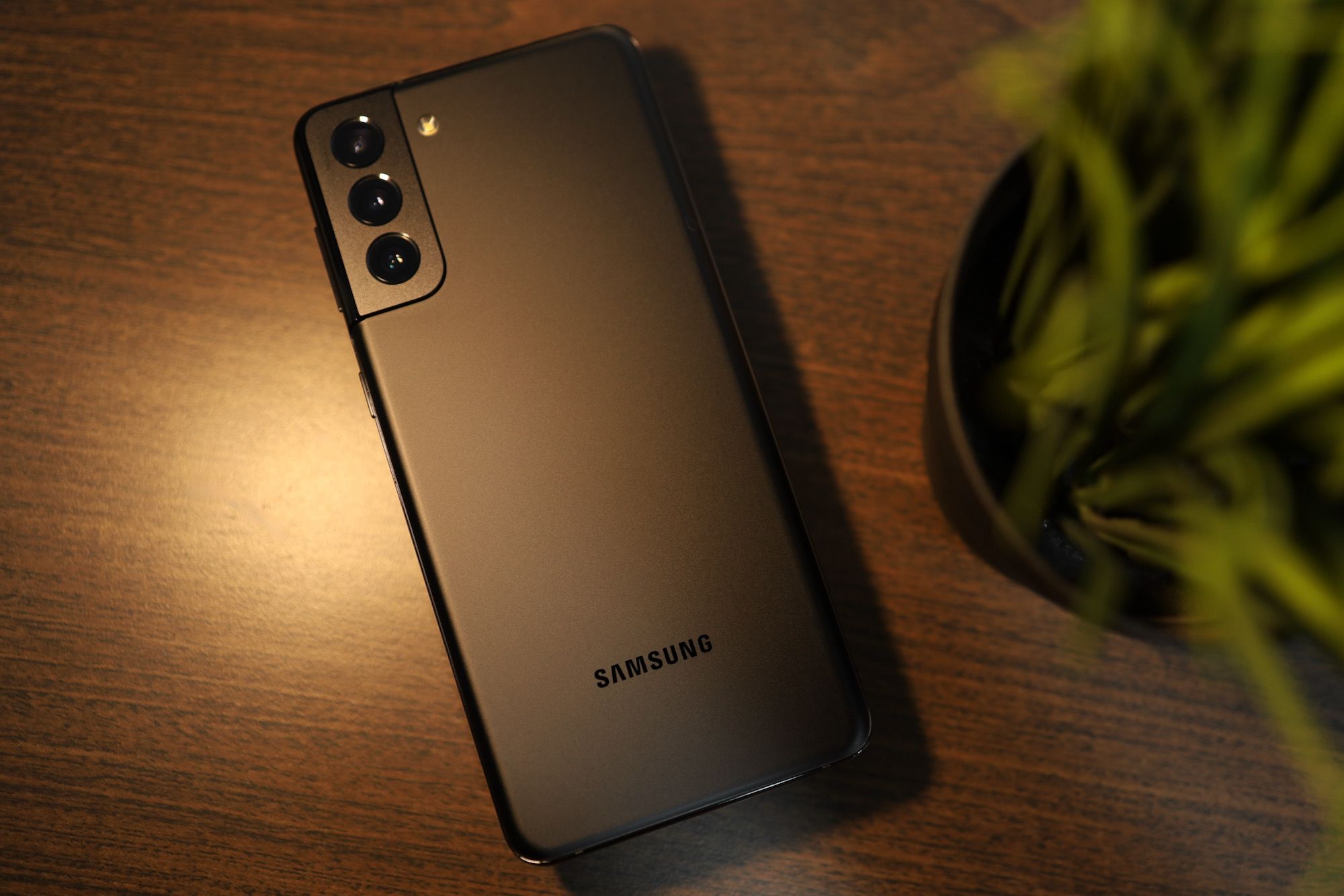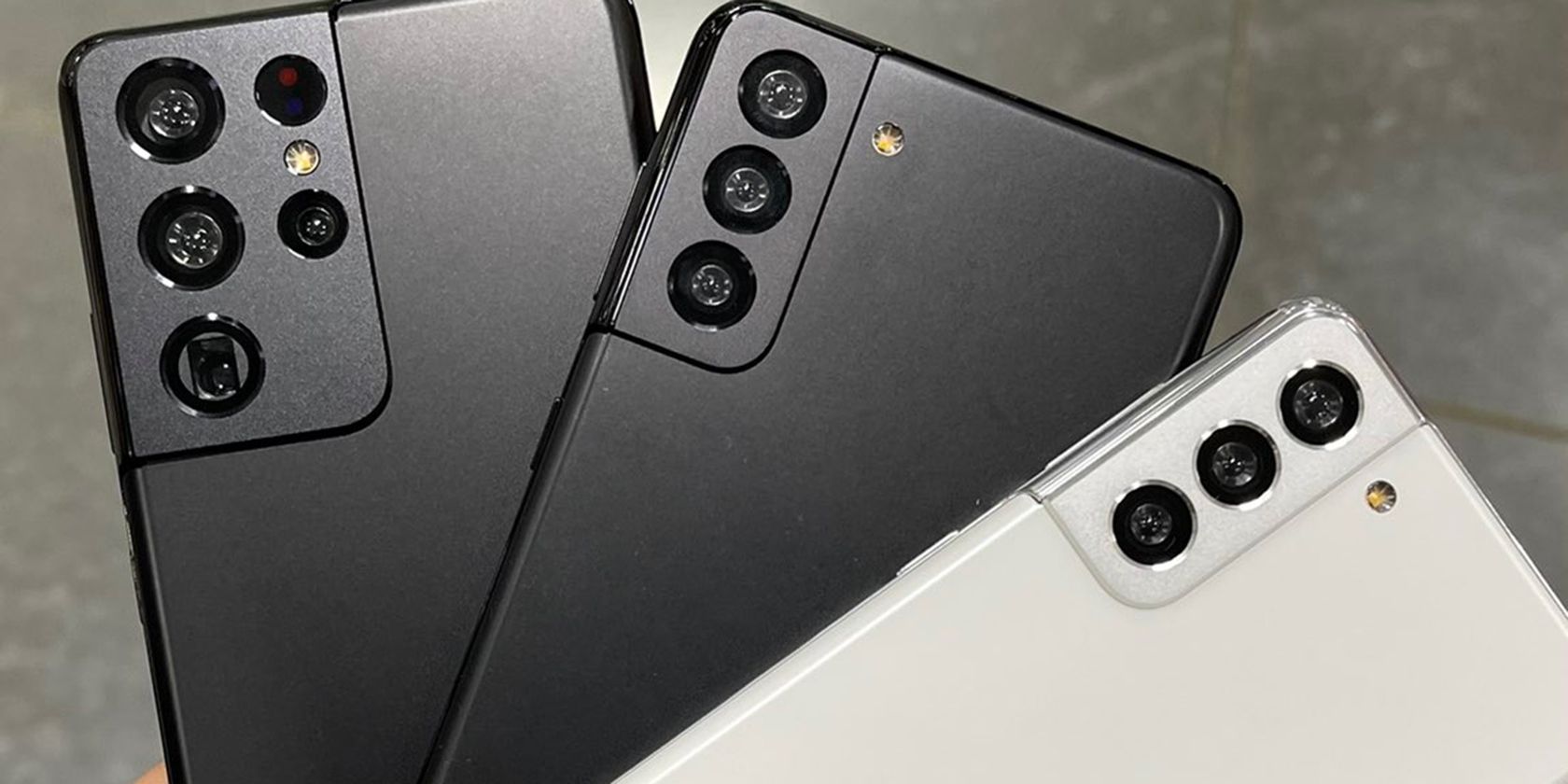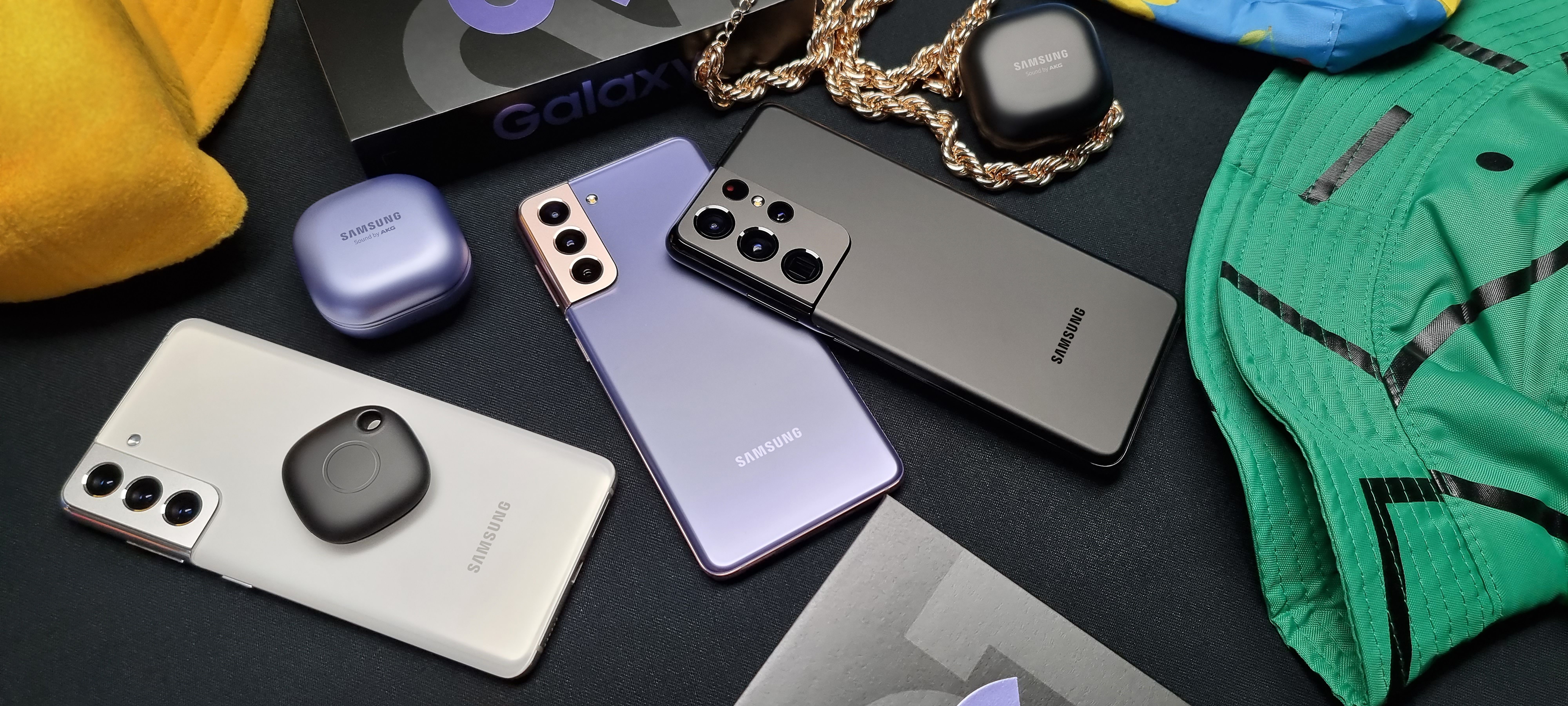Looking to buy the Samsung Galaxy S21 but wondering if you should save some money and just go for the older Galaxy S20 series? On paper, there does not seem to be that much of a difference between the Galaxy S20 and S21. When you look at the details though, you'll realize that Samsung has improved the S21 in many ways.
Let's look at the changes to see whether you should buy the Galaxy S21 or save some money and get the Galaxy S20 instead.
Samsung Galaxy S21 vs. Galaxy S20: The Major Differences
Across the board, Samsung has made some major improvements to the Galaxy S21 lineup that help improve usability in a big way.
Fingerprint Sensor and Display
The Galaxy S21 series uses a new and bigger ultrasonic fingerprint scanner from Qualcomm. This greatly helps with the unlock speed as the fingerprint scanner on the S20 series was known for false readings and failing to read one's fingerprint properly on most occasions.
Samsung is using a variable refresh rate OLED panel across the S21 lineup. This allows the display to dynamically adjust the refresh rate depending on the content that one is viewing, thereby saving power. This brings about a noticeable impact on battery life, especially on the Galaxy S21 Ultra, whose display can go as low as 10Hz.
The displays on all three Galaxy S21 variants are protected by the more durable Gorilla Glass Victus.
A Better Processor
The Galaxy S21 series makes use of Qualcomm's Snapdragon 888 or Exynos 2100 chipset. Based on the 5nm fabrication, the two chips are faster and more efficient than the Snapdragon 865/Exynos 990 found inside the Galaxy S20.
The Exynos 2100, in particular, is a major step up from the Exynos 990, which was notorious for overheating issues and poor battery life. These chips also feature an integrated 5G modem which offers faster and better 5G connectivity. This makes the Galaxy S21 series among the best 5G smartphones in the market.

Expandable Storage
There's no option to expand the storage on the Galaxy S21 series as they lack a microSD card slot, unlike the Galaxy S20. Samsung has done away with the microSD card slot entirely on the S21. However, with 128GB being base storage, this should not be a cause of concern for many.
Samsung does sell the Galaxy S21 in a 256GB variant, plus a 512GB option for the Ultra. If you need a lot of space, you can buy a higher storage variant.
Accessories
Samsung is not bundling earphones and USB-C power adapter with the Galaxy S21 series. This means you will have to buy a USB-C power adapter for your Galaxy S21 separately.
Galaxy S21 vs. S20: What's the Same?
In some areas, the Galaxy S21 is actually a downgrade from the Galaxy S20. Yet there are a lot of usability improvements that help deliver a better experience.
Samsung has done away with the glass back on the S21 and switched to polycarbonate plastic. The rear does have a new design language in which the camera bump has been extended from the main chassis, but the switch to plastic means the S21 feels less premium in-hand when compared to the Galaxy S20.
The Galaxy S21 size is the same as the Galaxy S20, making it a relatively compact Android flagship.
The camera setup on the Galaxy S20 is the same as the Galaxy S21. A primary 12MP f/1.8 shooter with OIS, a 12MP ultra-wide, and a 64MP telephoto sensor. The only improvements on the newer Galaxy are improved processing and some new camera modes. The front 10MP selfie snapper is also the same on both devices.
The battery size (4000mAh) and charging speeds (25W) remain the same across both devices. The Galaxy S21, however, will last longer as it has a more efficient display and chipset.
While there were quite a few differences between the Galaxy S10 and S10e, the Galaxy S20 and S21 are very similar.
Galaxy S21 Plus vs. S20 Plus
The middle child of the Galaxy S21 lineup, the S21+ does get some notable upgrades and downgrades over the S20+.
Both feature a 6.7-inch Dynamic AMOLED display with a 120Hz refresh rate. However, the S21+ has a 1080x2400 resolution (FHD+) while the Galaxy S20+ has a 1440x3200 resolution (QHD+).

Despite the drop in resolution and pixel density, the display on the Galaxy S21+ is better as it has a dynamic refresh rate, which helps with power savings. It also has a higher peak brightness that helps when watching HDR content.
The drop in resolution does not lead to any noticeable drop in display sharpness, so you will be completely oblivious of this change.
Samsung has also switched to a flat display panel on the Galaxy S21+. This might seem like a regression from the curved display of the Galaxy S20+. However, the flat display helps with one-handed usage as curved displays lead to a lot of accidental touches.
The Galaxy S21+ does have a new rear design, and unlike the Galaxy S21, it continues to feature a glass back. Like its predecessor, the Galaxy S21+ is IP68 dust and water-resistant, and it also features wireless charging along with reverse wireless charging.
Camera and Battery
Samsung uses the same triple-camera setup on the Galaxy S21+ as the Galaxy S20+, albeit without the ToF sensor. This means you get the same primary 12MP f/1.8 camera with OIS, a 12MP ultra-wide, and a 64MP telephoto sensor.
Samsung has also bumped the battery capacity on the Galaxy S21+ to 4800mAh. Add in the more efficient display and chipset and the Galaxy S21+ will last longer than the Galaxy S20+ and its 4500mAh battery.
Since both devices feature 25W wired and 15W wireless charging, their charging speeds are also the same. There's also reverse wireless charging, so you can easily charge your wireless earbuds and other Galaxy accessories.
Galaxy S21 Ultra vs. S20 Ultra
The biggest of the three Galaxy S21 variants, the Ultra packs many major improvements over last year's Galaxy S20 Ultra.
The Galaxy S21 Ultra ships with a slightly smaller 6.8-inch Dynamic AMOLED display compared to the 6.9-inch panel of the S20 Ultra. However, it uses a more advanced panel that is notably more efficient and can also drop its refresh rate to as low as 10Hz. The peak brightness is also rated for 1500 nits while playing HDR10 videos.
Camera
The camera setup of the Galaxy S21 Ultra is a major step up from the S20 Ultra. The main 108MP camera sensor remains the same with an f/1.8 aperture, but Samsung has managed to fix all the autofocus issues that plagued its previous Galaxy S flagship.

To improve the zoom performance, Samsung now uses two different zoom sensors on the S21 Ultra. There's a 10MP f/2.4 telephoto sensor offering 3x optical zoom and a 10MP f/4.9 periscope telephoto sensor with 10x zoom. That's different from the S20 Ultra, which only has a 48MP f/3.5 periscope telephoto sensor offering 4x optical zoom and 10x hybrid zoom.
While both devices also offer 100x digital zoom, the S21 Ultra takes notably sharper photos with more details thanks to the 10x periscope sensor and processing improvements.
The front 40MP f/2.2 selfie shooter remains the same on both Galaxy S devices. Its performance and capabilities also remain the same, including the ability to record 4K 60fps videos.
Battery Life and Other Extras
In terms of connectivity, the Galaxy S21 Ultra features a faster and more efficient 5G modem. Additionally, it is the only device in the Galaxy S21 lineup to support Ultra-Wide Band connectivity along with Wi-Fi 6E.
The Galaxy S21 Ultra is the only device in the S21 series to feature S Pen support. Samsung does not bundle an S Pen with the device, though.
While the Galaxy S21 Ultra's battery capacity remains the same as the Galaxy S20 Ultra (5000mAh), its maximum charging speed has been reduced to 25W from 45W. This should not make much difference as the S20 Ultra only took advantage of the 45W charger when being charged from zero to 20 percent.
Galaxy S21 vs. Galaxy S20 Price
The Samsung Galaxy S21 lineup carries a lower retail price than the Galaxy S20 series did a year ago. The Galaxy S21 starts from $799; the S21+ from $999; and S21 Ultra from $1,199.

The Galaxy S20 lineup should be heavily discounted right now. Still, with the new lower retail price tag, the Galaxy S21 series makes for a more tempting buy since you are getting some meaningful usability improvements.
Make sure to check for deals on the Galaxy S21 series before buying the device, as Samsung flagship smartphones are almost always discounted. Even otherwise, there are some attractive promotional schemes always running on them.
Samsung Galaxy S21 vs. S20: Making the Right Choice
At first, you might be tempted to save a few bucks and go for the Galaxy S20 instead of the Galaxy S21. If you don't really care about usability improvements the S21 series brings to the table or just want a smartphone for basic use and are getting a really great deal on the Galaxy S20, you can go for it.
However, if you don't mind spending a bit more for a better user experience, I will strongly recommend you to go for the Galaxy S21 as the improvements it packs will really count a year or two from now.
Image Credit: Samsung